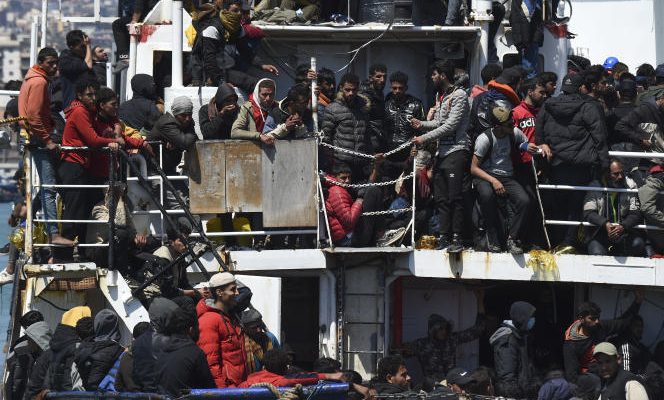Since the beginning of the year, Italy has been facing an increasing number of migrants arriving on its shores. To respond to this unprecedented influx since 2016, the Italian Council of Ministers announced on Tuesday April 11 that it was preparing to institute a six-month state of migratory emergency throughout the territory.
More than 31,000 people have already crossed the central Mediterranean and reached the country, departing mainly from Tunisia, but also from Libya and Turkey, since January. At least 492 perished before reaching it, according to the International Organization for Migration (IOM), which specifies that these figures are certainly below reality. Flows, up 300% compared to the same period in 2022, could exceed the record figures of 2016, the year in which 180,000 people reached Italian ports.
The state of emergency envisaged by the government of Giorgia Meloni (extreme right) comes under the civil protection code and has already been implemented for migration issues, particularly in 2011, after the Tunisian revolution. It makes it possible to release funds and speed up reception procedures by designating, without calls for tenders, dependent accommodation structures of the Ministry of the Interior. It should also make it possible to charter ferries or planes more quickly to transfer people disembarked on the small island of Lampedusa – towards which more than two thirds of arrivals converge – towards the rest of Italy.
“The number of arrivals remains low for a country of 60 million people or compared to the 120,000 Ukrainians who fled to Italy in the space of three months at the start of 2022”, recalls Flavio Di Giacomo, IOM spokesperson for the Mediterranean. However, the reception system for migrants – in which more than 110,000 people are currently accommodated – is destined to be quickly saturated: arrivals by sea should increase in the coming weeks with favorable weather conditions for crossings. “In 2018, Italy set out to dismantle the reception system and now finds itself pitching tents in Catania [Sicile] or at Roccella Ionica [Calabre], regrets Marco Bertotto, director of Doctors Without Borders (MSF) in Italy. We remain in a flow crisis management that we know is structural. »
Getting the attention of Brussels
The political dimension of this decree, which should be published in the coming days, goes beyond its legal implications. “Giorgia Meloni’s government must answer for its difficulties in tackling the migration issue in the face of an electorate to whom it has rightly presented it as a priority”, thus considers Vitalba Azzollini, a lawyer specializing in migration policies. The establishment of a state of emergency is also a way for the Meloni government to attract the attention of Brussels, from which it expects the establishment of new solidarity mechanisms to distribute migrants, and a new cooperation policy. and economic development with the countries of departure.
You have 50.17% of this article left to read. The following is for subscribers only.
